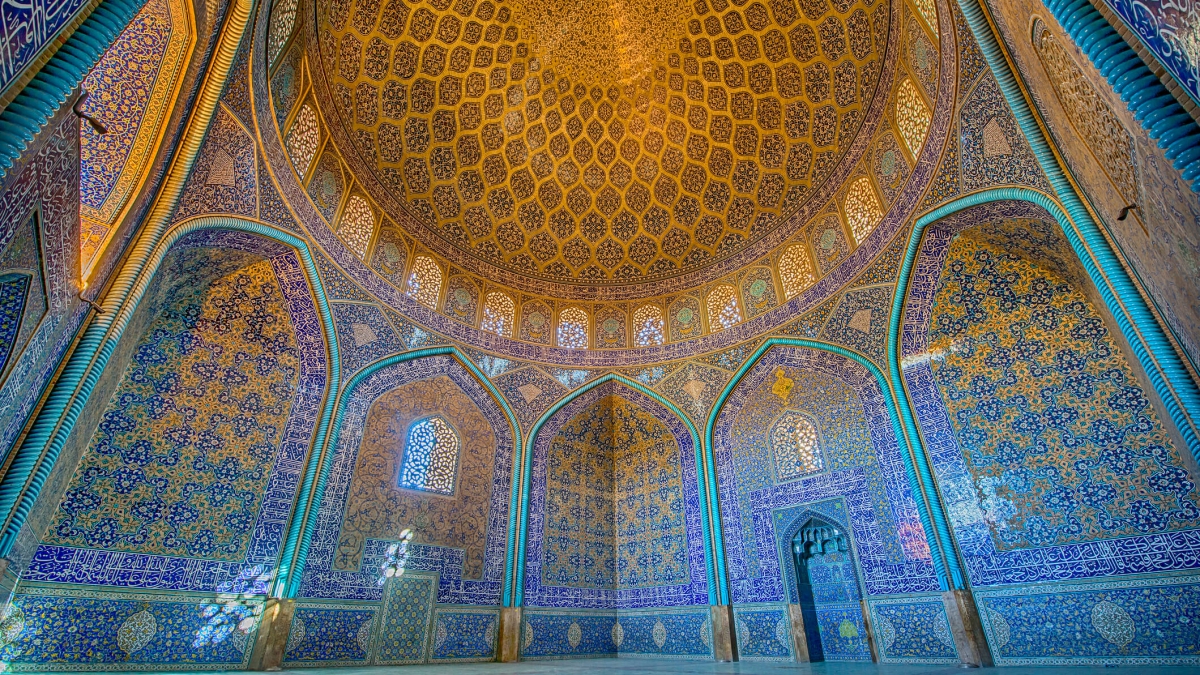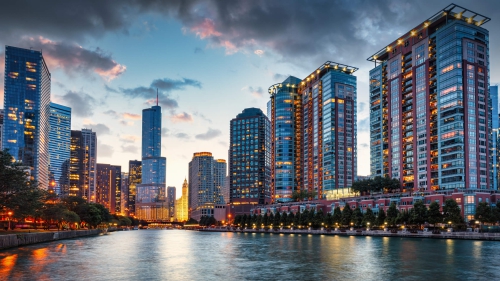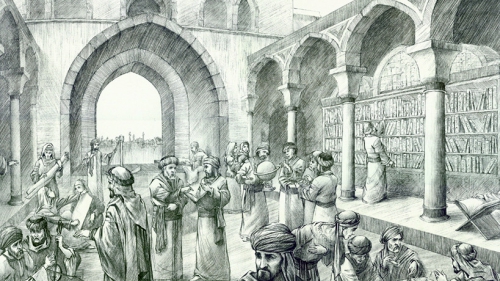Islam and Representation of Man in Art

Islam prohibits drawing pictures of human beings and erecting statues, which was the most contributing factor to making Islamic art distinctly different. Although Islamic art is so rich and so diverse, it is devoid of the elements of un-Islamic humanisms, except for some isolated instances of restrained non-compliance, which can be found predominantly in sheer secular fields. Governed by the strict principles of geometry, symmetry and calligraphy, Islamic art is loaded with spirituality and intelligibility. Its purpose is tripartite: to tranquilize, enlighten and enthuse.
The primary aim of Islamic art is to awaken the sixth sense in a person and to transport him to another realm of value and experience. Islamic art aims to bring to mind the meaning of life and mankind’s raison d’etre in it. The role of the physical world with its displays and “distractions” is to provide the necessary means and channels for achieving the former. This world is just a launching pad and a point of departure. It is a decoy.
So important and honourable is man that his aspirations and dreams, coupled with efforts and strategies to realize them, ought to be correspondingly of great consequence. If not properly handled, this world easily establishes itself as a hindrance, functioning like a quicksand. Man cannot allow himself to be lured by the one-dimensionality of life and to waste his only chance on chasing worldly shadows to the detriment of that which he has been created for. Man needs to keep an eye on the existential grand scheme of things at all times, and to keep moving in the direction of his noble targets.
Prophet Muhammad (peace and blessings be upon him) said that Allah is beautiful and loves beauty (Sahih Muslim). This means that Muslims are encouraged to be beautiful, live beautifully, and create beautiful objects as well as sensations. Right from the start, beauty was a preoccupation of every Muslim, rendering aesthetics integral to the Islamic civilizational identity. However, beautiful are only those things that conform to the highest standards of divine beauty. The canons of the spiritual domain are indisputably absolute, presiding over the canons of the lower domains. Without ever being allowed to reverse the trend, the latter incessantly plays second fiddle to the former.
Hence, the beauty of matter is expected to be nothing but a reflection of the beauty of spirit, and the beauty of earth is meant to be merely a reflection of the beauty of heaven. The beauty of earth furthermore is to help man reminisce about the beauty of spirituality and heaven, to forge stronger relations with them, and to intensify his preparations for an eventual unification with them. Only the beauty of spirituality and heaven is authentic, real and enduring. It is absolute. Whereas other kinds of beauty are relative, transient and phony. It becomes more than obvious, then, when it comes to people’s taking on the task of self-fulfilment where the focus should be.
Man, it stands to reason, is not the master, but a servant of beauty. He creates beauty not for beauty’s sake, but for his own sake. Man exists because of, and for, beauty. Without beauty life will be hollow and meaningless. By the same token, without beauty neither the hereafter will be comprehendible. Much like within the framework of this world, the life of the hereafter and beauty are inseparable too. According to the Islamic eschatology, the highpoint of the bliss of paradise will be seeing Almighty Allah, who is most Beautiful, the Possessor of absolute beauty, and the Source of all beauty. He is Beauty itself.
Herein lies an answer as to why Islam disqualified the prospect of representing human beings in art. It did thus because the universe of man is so special, so sophisticated and so advanced - ontologically speaking - that no capacities and media of any art form can capture its classiness. No human artistic creativity can encompass it either. The two are poles apart, residing at different levels where different rules and criteria apply.
Whatever an artist can come up with, either at the conceptual or the applied plane, is bound to fall short of making the grade. It will misrepresent a person and so, will disseminate some wrong and misleading messages. Which is dishonest, and everything that is found wanting in the exalted moral code of Islam, Islam hastens to outlaw. In this manner, Islam does justice to all sides involved in art: man, art itself and truthfulness, inflicting harm on neither.
Such an inappropriate art, one could argue, is an affront to the dignity and superiority of man. It is also an insult to itself. What is more, such an art cannot serve the interests of the truth, but is doomed to end up serving the interests of falsehood. It therefore cannot be called art in the first place, for art and falsehood are irreconcilable. Art is such a magnanimous enterprise that it cannot be downgraded by any means.
By prohibiting the depiction of man in art, Islam wants to save man from making a wrong step in the direction of the godlessness of humanism. If in Islam the panache of art is not cut out for the exclusivity of man, according to the philosophy of humanism, such is not the case with itself. Humanism denies spirituality altogether and also the objectivity of the truth as well as moral values. It reduces man to a nicely-shaped piece of matter whose life mission is limited to a now and a here, and which does not transcend the span of self-aggrandizement and pleasure-seeking.
Man devalued himself through humanism so much that it became possible, yet rather easy, to illustrate such “simplicity” through art. The corporeality and one-dimensionality of the humanistic man was a perfect fit for the analogous corporeal and one-dimensional character of humanistic art. Both the humanistic man and his art were stuck within the boundaries of the limited self and its equally limited milieus.
In other words, a segment of matter can easily find a common ground with another segment of the same matter. Whatever the differences between the two segments, they are still made of the same substance. In Islam, contrariwise, although matter plays a prominent role in the narrative of man – and in the narrative of life in general – what makes man special is an immaterial and otherworldly dimension, which is un-representable. In lieu of trying to do the impossible and reduce the prominence of man to the restrictive terms of art, the real meaning and quality of man is to be rather spiritualized, intellectualized, hankered after, felt, experienced and lived for, plus according to its infinite connotations.
This is the reason why, as per a tradition of the Prophet, on the Day of Judgment the makers of images will be punished, and as part of the punishment process they will be mocked and will be told: “Breathe life into that which you have created” (Sunan al-Nasa’i)
The Prophet is also reported to have said: “Whoever makes an image will have to breathe life into it and he will be punished since he will not be able to breathe life into it” (al-Adab al-Mufrad; authentic or sahih hadith according to al-Albani).
This will be the case because the makers of images and statues not only misrepresented people, but as well disfigured them. While doing so, they insulted them and, in sync, disrespected Almighty Allah too, who is the only Creator that can grant the gift of life. No wonder that such “creators” (artists) will be charged with the crime of trying to imitate the creation and the creative power of Allah. But instead of creating, they impaired; instead of promoting authentic beauty, they promoted ugliness; and instead of being truthful, they lied.
Based on the same logic, Islam did not prohibit representing inanimate objects through the media of art. The reason is simple: because those objects are made of dead matter only and, therefore, are representable. Their simplicity can be dealt with by the “simplicity” (limitations) of art.
Many people speak about the greatness of the masterpieces of humanistic art through ages, however, in the eyes of truly enlightened persons and those who have subscribed themselves to the higher understandings and models of aesthetics, such masterpieces are no more than representations of human degeneration and backsliding. The spoken of greatness is perceived as irrelevance at best, and its frame of reference a frivolity, a pretence, and even a potential jeopardy.
Islam’s prohibition of the likes of the Western humanistic art, where the human orb spells the centre of gravity, was meant to support man and his cause. Such was a blessing and a sign of Allah’s care for His vicegerent. The more one studies the art of humanism, the more one discovers the secrets why Islam actually adopted a different path. One can also discover the depth of the true value of the non-humanistic alternatives Islam afforded man.
Today, unfortunately, many Muslims are still mesmerized and blinded by the false glitter of the humanistic art, which only goes to validate how large the extent of its deceptive power is. Needless to say that the only way towards recovery is to understand better both the Western humanism and the “humanism” of Islam, and to start perceiving and appreciating better - as a result - both man and art.
Topics: Beauty, Humanism, Islamic Art And Architecture, Islamic Culture And Civilization
Views:8137
Related Suggestions

















